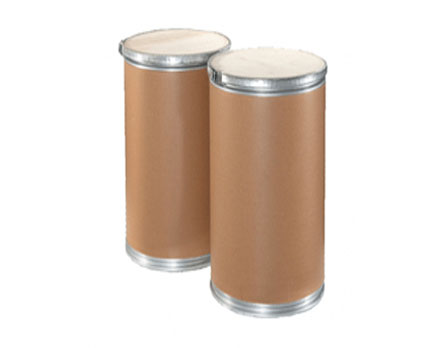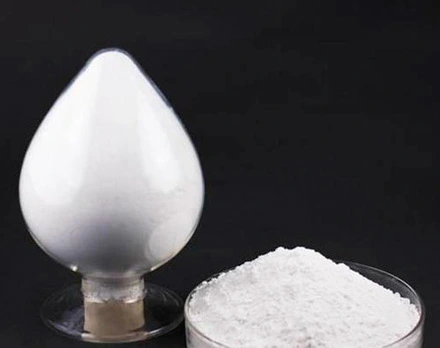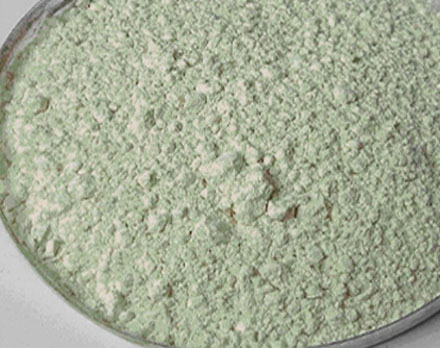Xylitol and Stevia Blending
Xylitol and Stevia Blending
The blending of stevia and xylitol is a common sweetener combination. Here are some information about their blending:
I. Advantages of blending.
1. Complementary taste: stevia has high sweetness, but may have a slight bitter aftertaste or peculiar taste. Xylitol has pure sweetness and a refreshing taste. The blending of the two can improve the bad taste of stevia and make the overall sweetness softer, natural and purer.
2. Superposition of health characteristics: stevia has extremely low calories, and xylitol metabolism in the human body does not rely on insulin, has little effect on blood sugar, and has the characteristics of preventing dental caries. After blending, the product is suitable for special groups such as diabetics and obese people, and helps reduce the risk of dental caries, and the health advantages are more prominent.
3. Functional synergy: Xylitol has good moisture retention, which can keep food moist and prevent drying; stevia has good stability and can better maintain its sweetness characteristics under different processing conditions. The combination of the two can play their respective functional advantages in food processing, which helps to improve product quality and stability.
II. Application areas.
1. Candy industry: widely used in chewing gum, hard candy, soft candy and other products. Blended sweeteners can not only give candy a good sweetness, but also use the anti-caries properties of xylitol to improve the health value of the product, while reducing the bad taste that stevia may bring.
2. Baked food: Used in the production of baked goods such as cakes, bread, and biscuits. Blended sweeteners can can replace part or all of sucrose, reduce calories, and the moisture retention of xylitol helps to maintain the softness and moisture content of baked goods, and extend the shelf life of the product.
3. Beverage industry: Suitable for all kinds of beverages, such as carbonated beverages, fruit juice drinks, tea beverages, functional beverages, etc. Blended sweeteners can provide sweetness for beverages and meet consumers' demand for low-sugar and low-calorie beverages. At the same time, the combination of stevia and xylitol can maintain good stability and taste in different beverage systems.
4. Other fields: Blended sweeteners can also be used in some condiments, dairy products, health products and other products. For example, the blends of stevia and xylitol in yogurt can not only increase sweetness, but also reduce calories, and can also use the moisturizing property of xylitol to improve the texture and taste of yogurt.
III. Precautions for use.
1. Sweetness adjustment: Since the sweetness of stevia is much higher than that of xylitol and sucrose, the amount of stevia needs to be precisely controlled during blending to avoid the product being too sweet or having a bad taste. It is recommended to conduct a small test first, and gradually adjust the ratio of stevia to xylitol according to the target sweetness and taste requirements of the product to find the best blending solution.
2. Pay attention to raw material quality: Select stevia and xylitol raw materials with reliable quality and high purity. The quality of stevia will vary depending on the extraction process and the source of the raw materials. High-quality stevia should have a lower impurity content and a better taste. Xylitol should also be selected to meet food grade standards to ensure the quality and safety after blending.
-
Inulin
-
Polydextrose
-
Resistant Dextrin
- Trehalose
- Resistant Dextrin(Soluble Corn Fiber)
- Resistant Dextrin(Soluble Corn Fiber)(Powder)
- Resistant Dextrin(Soluble Tapioca Fiber)(Powder)
- Resistant Dextrin(Soluble Tapioca Fiber)(Liquid)
- Resistant Maltodextrin Powder
- Resistant Maltodextrin Powder (Liquid)
- Organic Resistant Dextrin Powder (Corn Type) 70%
- Organic Resistant Dextrin Powder (Corn Type) 90%
- Organic Resistant Dextrin Powder (Tapioca Type) 70%
- Organic Resistant Dextrin Powder (Tapioca Type) 90%
- Organic Resistant Dextrin Syrup (Corn Type) 70%
- Organic Resistant Dextrin Syrup (Corn Type) 90%
- Organic Resistant Dextrin Syrup (Tapioca Type) 70%
- Organic Resistant Dextrin Syrup (Tapioca Type) 90%
- Organic Resistant Maltodextrin Powder (Corn Type) 70%
- Organic Resistant Maltodextrin Powder (Tapioca Type) 70%
- Organic Resistant Maltodextrin Syrup (Corn Type) 70%
- Organic Resistant Maltodextrin Syrup (Tapioca Type) 70%
- Organic Soluble Corn Fiber Powder 70%
- Organic Soluble Corn Fiber Powder 90%
- Organic Soluble Corn Fiber Syrup 70%
- Organic Soluble Corn Fiber Syrup 90%
- Organic Soluble Tapioca Fiber Powder 70%
- Organic Soluble Tapioca Fiber Powder 90%
- Organic Soluble Tapioca Fiber Syrup 70%
- Organic Soluble Tapioca Fiber Syrup 90%
- Resistant Dextrin Powder (Corn Type) 70%
- Resistant Dextrin Powder (Corn Type) 90%
- Resistant Dextrin Powder (Tapioca Type) 70%
- Resistant Dextrin Powder (Tapioca Type) 90%
- Resistant Dextrin Syrup (Corn Type) 70%
- Resistant Dextrin Syrup (Corn Type) 90%
- Resistant Dextrin Syrup (Tapioca Type) 70%
- Resistant Dextrin Syrup (Tapioca Type) 90%
- Resistant Maltodextrin Powder (Corn Type) 90%
- Resistant Maltodextrin Powder (Tapioca Type) 90%
- Resistant Maltodextrin Syrup (Corn Type) 90%
- Resistant Maltodextrin Syrup (Tapioca Type) 90%
- Soluble Corn Fiber Powder 70%
- Soluble Corn Fiber Powder 90%
- Soluble Corn Fiber Syrup 70%
- Soluble Corn Fiber Syrup 90%
- Soluble Tapioca Fiber Powder 70%
- Soluble Tapioca Fiber Powder 90%
- Soluble Tapioca Fiber Syrup 70%
- Soluble Tapioca Fiber Syrup 90%
-
Dioscorea Opposita Dietary Fiber
-
Wheat Dietary Fiber
-
Oat Dietary Fiber
-
Polydextrose Powder (Conventional Type)
-
Polydextrose Powder (Special Type)
-
Polydextrose Powder (Sugar Free Type)
-
Polydextrose Powder (Type II)
-
Polydextrose Powder (Type III)
-
Polydextrose Syrup (Conventional Type)
-
Polydextrose Syrup (Refined Type)
-
Polydextrose Syrup (Special Type)
-
Polydextrose Syrup (Standard Type)
-
Polydextrose Syrup (Sugar Free Type)
- Fructo Oligosaccharide
-
Malt Oligosaccharide
- Isomalto-oligosaccharide 900 Powder
- Isomalto-oligosaccharide 900 Powder(Corn)
- Isomalto-oligosaccharide 900 Powder(Tapioca)
- Isomalto-oligosaccharide 900 Syrup
- Isomalto-oligosaccharide 900 Syrup(Tapioca)
- Isomalto-oligosaccharide 900 Liquid (Corn)
- Isomalto-oligosaccharide 900 Liquid (DP3)
- Isomalto-oligosaccharide 900 Liquid (Tapioca)
- Isomalto-oligosaccharide 900 Powder (Corn)
- Isomalto-oligosaccharide 900 Powder (DP3)
- Isomalto-oligosaccharide 900 Powder (Tapioca)
- Organic Isomalto-oligosaccharide 900 Liquid (Corn)
- Organic Isomalto-oligosaccharide 900 Liquid (DP3)
- Organic Isomalto-oligosaccharide 900 Liquid (Tapioca)
- Organic Isomalto-oligosaccharide 900 Powder (Corn)
- Organic Isomalto-oligosaccharide 900 Powder (DP3)
- Organic Isomalto-oligosaccharide 900 Powder (Tapioca)
- Xylo-oligosaccharide
- Galacto-oligosaccharide
-
Mannan Oligosaccharide
-
Isomaltulose Powder
-
Saigao Stachyose






